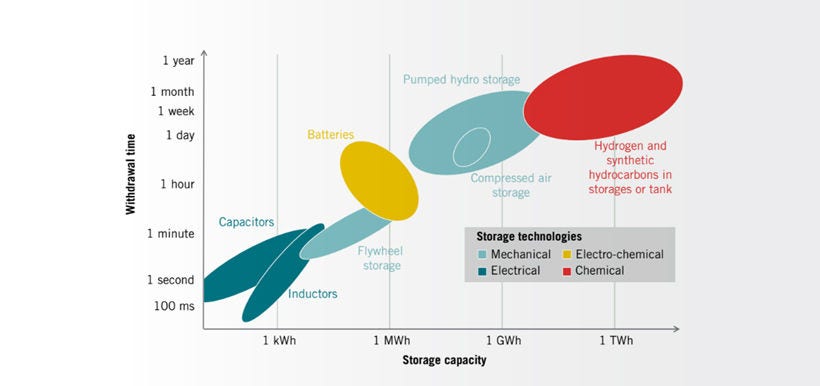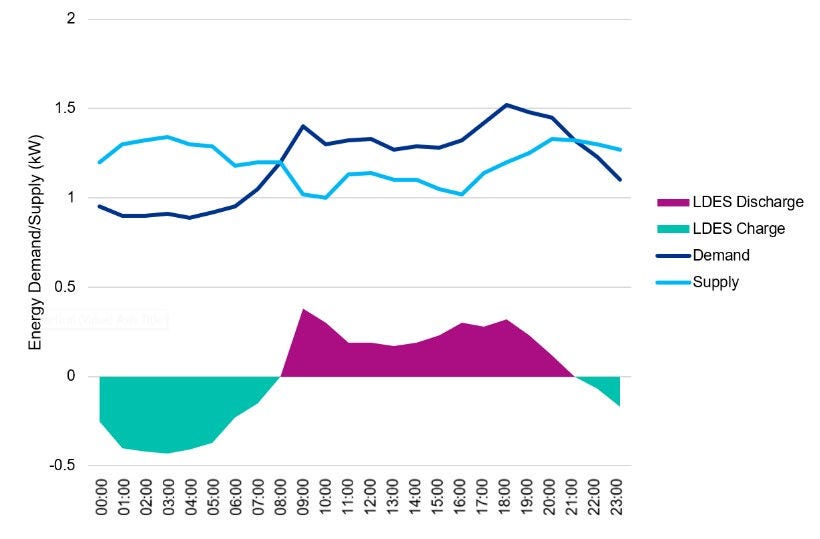Scoping out the path to LDES
LDES has received increased attention over the last few years due to its pivotal role in our energy transition and was identified as such in Climate Action Plan 2023 (CAP23). ESB Networks, Ireland’s Distribution System Operator (DSO) covered the topic in their June 2023 publication Scenarios for 15-20% Flexible System Demand [3] highlighting the importance of medium- and long-duration storage for system flexibility and stating that their work on designing market-based, location-specific multiyear contracts for medium-duration energy storage (4+ hours) has already commenced.
Furthermore, EirGrid’s Shaping Our Electricity Future (SOEF v1.1) Roadmap from July 2023 quantifies Ireland’s requirement for LDES at an additional 2,400 MW and Northern Ireland’s by 350 MW in 2030.
The benefits of LDES are not just avoided carbon emission and increased renewable penetration: In their Game Changer report from 2022[4], Energy Storage Ireland and Baringa found that energy storage can deliver a net saving of €85m per year to end customers in addition to reducing day-ahead emissions by 50% and curtailment by 100%.
The most recent development in Ireland’s LDES space, EirGrid and SONI, the island of Ireland’s two Transmission System Operators (TSOs) published A Call for Evidence on the Market Procurement Options for Long Duration Energy Storage (LDES) on 27 October[5].
The TSOs recognise the need to investigate several matters related to LDES such as the needs case, investment barriers, services provided by storage, and revenue stream options. Through this call for evidence, the TSOs look to obtain views from key stakeholders on these matters across a list of 31 key questions before 24 November 2023.
In the Call for Evidence, EirGrid and SONI highlight some of the benefits LDES can present to Ireland. The most notable ones are:





